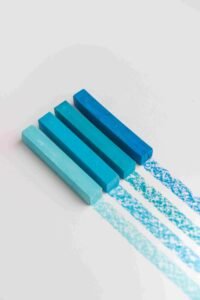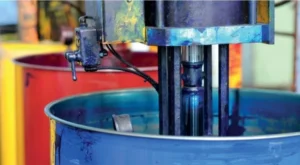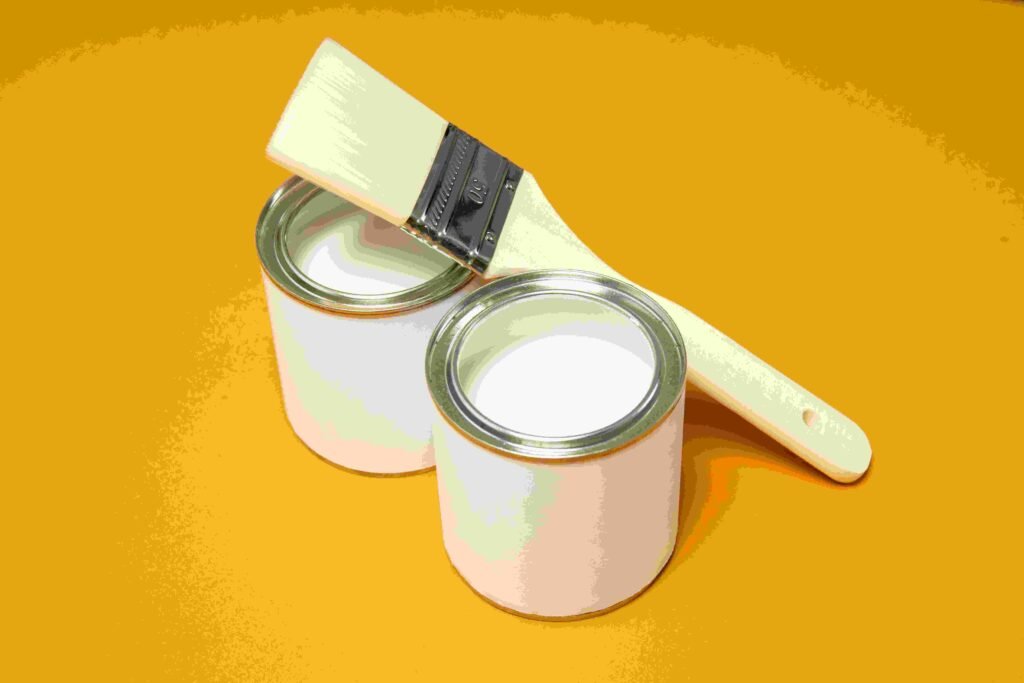Introduction to Mithila Paints
The paints used in this rich artistic tradition are derived from natural materials, ensuring that the colors maintain their vibrancy while reflecting the essence of the environment. The primary components include vegetable dyes, minerals, and even cow dung, indicative of the sustainable practices ingrained in the culture. These resources not only provide a vivid palette but also ensure that the paints are biodegradable and non-toxic, aligning with contemporary demands for eco-friendly products.
Mithila paints are characterized by unique techniques that vary within sub-regions and communities. The application of color is often done using the tip of twigs or fingers, allowing for a delicate and intricate approach. Furthermore, the thematic representations, ranging from deities to the natural world, showcase an aesthetic that is both decorative and narrative. This blend of art and storytelling encapsulates the identity of the Mithila people, allowing them to express their experiences and beliefs through the medium of paint.
As we delve deeper into the manufacturing quality and understanding pigmentation in Mithila Paints, it becomes essential to appreciate the cultural significance and historical context that make these paints a remarkable aspect of Indian art.
The Manufacturing Process of Mithila Paints
The manufacturing process of Mithila paints is an intricate fusion of traditional craftsmanship and modern techniques, aimed at preserving the quality and authenticity of this art form. The journey begins with the careful selection of raw materials, which primarily include natural pigments, water, and various binding agents like gum or starch. These ingredients are paramount as they establish the vibrant hues and characteristics of the final product. The pigments, traditionally sourced from local flora, minerals, and even organic materials, provide the paint with its distinctive look and feel.
Once the raw materials are gathered, the next phase involves grinding the pigments into a fine powder. This step is essential as it determines the paint’s texture and coverage. Artisans typically utilize stones or traditional mortar and pestle for this task, allowing for more control over the particle size, which leads to smoother application and richer colors. Following this, the powdered pigments are combined with binding agents and water to create a paste that can be easily manipulated for painting.
The customization of colors is a critical aspect in manufacturing Mithila paints. Artisans often experiment with different proportions of pigments and binders to achieve specific shades, ensuring that no two batches are identical. This uniqueness not only represents the artist’s vision but also reflects the cultural narrative of Mithila. Once the appropriate mixtures are created, the next step involves transferring the paint into containers for use.
Throughout this process, attention to detail is paramount. Artisans often adhere to traditional practices, ensuring that the integrity of Mithila painting is maintained. The combination of these meticulous steps results in high-quality Mithila paints that continue to be cherished for their beauty and cultural significance. This elaboration on the manufacturing process underscores the dedication to quality and the reverence for tradition within the Mithila painting community.

Raw Materials Used in Mithila Paints
Mithila paints, an intricate form of traditional Indian art, rely on a variety of raw materials that significantly contribute to their vibrant colors and overall quality. At the heart of these paints are natural pigments, which are derived from plants, minerals, and other organic sources. The use of these natural pigments not only enhances the aesthetic appeal of the artwork but also emphasizes the importance of sustainability in the manufacturing process of Mithila paints. Commonly used natural pigments include turmeric for yellow, indigo for blue, and ochre for earthy tones. These pigments are favored for their rich hues and the ability to blend harmoniously with other colors.
In addition to natural pigments, binders play a crucial role in the formulation of Mithila paints. Binders, which help adhere the pigments to the surface, can be made from various natural substances like cow dung, gum, and water. These binders are not only eco-friendly but also contribute to the longevity and durability of the paint. The use of organic binders ensures that the paints remain safe for both artists and the environment. Furthermore, traditional artisans often use locally sourced materials, which promotes a sustainable approach to art-making while supporting the local economy.
Additives may also be included to enhance specific properties of Mithila paints. For instance, certain oils can be added to improve the paint’s flow and workability. The careful selection of all these materials is paramount, as it not only influences the final visual impact but also determines the ecological footprint of the product. By prioritizing the use of natural and sustainably sourced materials, the Mithila painting community underscores its commitment to preserving traditional practices while addressing contemporary environmental concerns.

Understanding Pigmentation in Paints
Pigmentation is a crucial element in the formulation of paints, significantly impacting their color, durability, and texture. At its core, pigmentation refers to the use of pigments, which are solid, colorant materials that can impart hue and opacity to a paint. In Mithila paints, these pigments not only contribute to the visual appeal but also affect the paint’s performance and longevity. The pigments are chosen based on their specific properties, such as lightfastness, stability, and environmental compatibility.
The primary types of pigments used in Mithila paints include organic and inorganic pigments. Organic pigments tend to be vibrant and are derived from natural sources, such as plants and minerals. Conversely, inorganic pigments, which are often more stable and durable, are obtained through mineral extraction and processing. These pigments exhibit unique properties, influencing how the paint behaves under different environmental conditions. For instance, certain pigments may be more prone to fading when exposed to sunlight, while others might resist degradation in moisture-rich settings.
Understanding color mixing is also fundamental when discussing pigmentation. The science behind color mixing involves the occurrence of additive and subtractive color mixing. Additive mixing occurs when colored light is combined, while subtractive mixing involves blending pigments that absorb specific wavelengths of light. This differentiation is particularly important for artists, as it influences the final appearance of their work. Mastering these principles allows paint manufacturers to produce pigments that yield consistent and desirable outcomes.
Additionally, the stability of pigments in various formulations contributes to the overall quality of Mithila paints. A carrier medium is often used that can preserve the integrity of pigments over time, ensuring the color remains true. In conclusion, the intricate relationship between the choice of pigments and the properties of paints plays a vital role in the art of Mithila painting, contributing to its distinctive character and appeal.

Traditional and Modern Techniques in Paint Manufacturing
The process of manufacturing Mithila paints embodies a fascinating blend of traditional methods and contemporary techniques. Traditionally, Mithila artists used natural materials sourced from their environment, such as plant extracts, minerals, and other organic substances. The colors derived from these elements were an integral part of Mithila culture, often passed down through generations. Artists took great care in preparing these pigments, grinding stones or leaves with water to create a paste, which was then applied to surfaces like walls, cloth, and paper. This meticulous process not only imparted vibrancy but also reflected the rich cultural narratives of the Mithila region.
On the other hand, modern advancements have introduced new dimensions to the production of Mithila paints. Innovations in technology allow for greater consistency and reliability in color formulation, enabling artists to maintain quality control more effectively. For instance, synthetic pigments are now used alongside traditional materials, offering a wider palette of colors that are often brighter and more durable. This integration of modern techniques does not compromise the traditional artistry; rather, it enhances the artists’ ability to express their creativity while ensuring that the paints meet contemporary standards for safety and longevity.
Furthermore, modern manufacturing processes have improved the efficiency of production, allowing for larger quantities of paint to be produced while preserving the unique aesthetic of Mithila artwork. Artists can now create elaborate designs with greater ease, utilizing tools and technology that save time without sacrificing the essence of their craft. By marrying traditional and modern techniques, Mithila paints embody a unique approach that honors the past while embracing innovation, making them a symbol of cultural heritage that continues to evolve.

Quality Control in Mithila Paint Production
Ensuring the quality of Mithila paints is a meticulous process that involves various practices and measures aimed at maintaining high standards throughout production. The manufacturing process begins with the careful selection of raw materials, where natural pigments derived from plants, minerals, and other sources are assessed for purity and vibrancy. Quality control begins at this foundational level, as the choice of pigments significantly influences the longevity and visual appeal of the final product.
Once the raw materials are sourced, comprehensive testing procedures are implemented. Each batch of paint undergoes rigorous evaluations to verify that it meets established color standards and consistency. These tests include assessments for opacity, drying time, and resistance to environmental factors, ensuring that the paints are durable and maintain their aesthetic qualities over time. Specialized equipment and methodologies are employed to measure these attributes accurately, providing insights that guide production adjustments if necessary.
In addition to testing raw materials and paint formulations, the manufacturing environment itself is subject to strict quality control measures. Cleanliness and organization in the production area are essential to preventing contamination and ensuring that the paints remain true to their intended colors. Regular audits and inspections are conducted to uphold a structured and safe manufacturing facility. Furthermore, collaboration with skilled artisans who understand traditional Mithila painting techniques is crucial, as their expertise helps maintain the integrity of the art form.
Finally, quality control extends into the packaging phase. Paints are packaged using materials that safeguard them during transit and storage while also providing essential information to consumers, such as usage instructions and safety guidelines. This holistic approach to quality control ensures that Mithila paints meet and exceed consumer expectations, preserving the cultural heritage while delivering a superior product in the marketplace.

Applications of Mithila Paints
Mithila paints, with their vibrant colors and intricate designs, have found diverse applications across various industries, highlighting their versatility and cultural significance. Initially rooted in the traditional art form of the Mithila region of Bihar, India, these paints have transcended their original purpose, becoming influential in the realms of art, interior design, and crafts.
In the artistic domain, Mithila paints have garnered attention from contemporary artists and collectors alike. Artists utilize these paints to create intricate artworks that reflect the rich cultural heritage of the Mithila community. The natural pigments sourced from minerals, plants, and other organic materials allow for an array of striking colors that enhance the visual appeal of paintings. As a result, Mithila paintings have become popular both locally and internationally, often displayed in galleries and exhibitions.
Beyond traditional art, Mithila paints play a significant role in interior design. The unique aesthetic, characterized by vibrant hues and detailed patterns, has inspired designers to integrate Mithila art into home decor. Walls adorned with Mithila paintings can transform spaces, adding warmth and a sense of culture. Additionally, items such as cushions, curtains, and ceramics decorated with Mithila designs are increasingly popular in home furnishings, allowing individuals to bring a piece of this heritage into their modern living environments.
The craft industry is another area where Mithila paints thrive. Artisans leverage these unique pigments to create decorative items, including pottery, textiles, and even fashion accessories. Each piece not only serves a functional purpose but also narrates stories and traditions, thereby preserving the cultural identity of the Mithila community. Through these applications, Mithila paints continue to promote and celebrate cultural heritage, showcasing their significance in contemporary society.

The Market for Mithila Paints: Trends and Perspectives
The market for Mithila paints has been experiencing a notable transformation, influenced by various contemporary trends and consumer preferences. Traditionally rooted in Indian culture, Mithila paintings, which originate from the Mithila region of Bihar, are gaining traction beyond local borders. The rising interest in indigenous art forms has allowed these paintings to penetrate international markets, where consumers increasingly seek authentic and unique decorative items.
As a result, the market dynamics surrounding Mithila paints have shifted, with a growing emphasis on quality, originality, and artisanal craftsmanship. Consumers are now more inclined to support sustainable and ethical practices, prompting many manufacturers to adopt environmentally friendly methods in their production processes. This trend aligns well with the global movement towards sustainable consumerism, presenting a significant opportunity for Mithila artisans and manufacturers to expand their reach.
Additionally, the rapid growth of e-commerce platforms has facilitated greater accessibility for both artisans and consumers. Many Mithila artists have started leveraging online marketplaces to showcase their artwork, effectively breaking geographical barriers that once limited their audience. This shift not only enhances visibility but also helps in preserving traditional techniques by ensuring that the art form remains in demand.
Despite these opportunities, there are challenges that manufacturers face in the Mithila paints market. Competition from mass-produced decorative items poses a threat to the profitability of artisanal products. Moreover, maintaining the authenticity of traditional techniques amidst this commercial pressure can be an arduous task. Nonetheless, the increasing awareness and appreciation for cultural heritage among consumers may serve as a counterbalance to these challenges, allowing Mithila paints to thrive in both local and global markets.

Conclusion: The Future of Mithila Paints
The exploration of Mithila paints throughout this blog post has highlighted the rich tradition and intricate techniques involved in their creation. As one delves deeper into the art form, it becomes evident that Mithila painting is not merely a craft but an essential cultural heritage that deserves preservation. The blend of vibrant colors, intricate patterns, and the stories they encapsulate reflects the identity of the Mithila region and its people. However, there is an increasing necessity to adapt these time-honored practices to meet the demands of modern markets.
Looking forward, the future of Mithila paints appears promising yet challenging. With globalization, there is a growing interest in unique art forms worldwide, presenting an opportunity for Mithila artists to expand their reach. By adopting contemporary techniques without sacrificing traditional values, artisans can create products that appeal to a broader audience. Furthermore, the incorporation of eco-friendly materials and practices into the manufacturing process aligns with the global shift towards sustainability in art and production. This will not only preserve Mithila paint-making techniques but also resonate with environmentally conscious consumers.
In addition, leveraging digital platforms for marketing and selling Mithila artworks can significantly enhance visibility and accessibility. Artists can showcase their work to potential buyers around the globe, which could lead to an increase in demand. This strategic use of technology will facilitate the growth of Mithila paints in the international market, ensuring its legacy continues to thrive. Overall, while challenges remain, the integration of traditional craftsmanship with modern innovation provides a fertile ground for the evolution of Mithila paints, promising a vibrant future for this cultural treasure.


